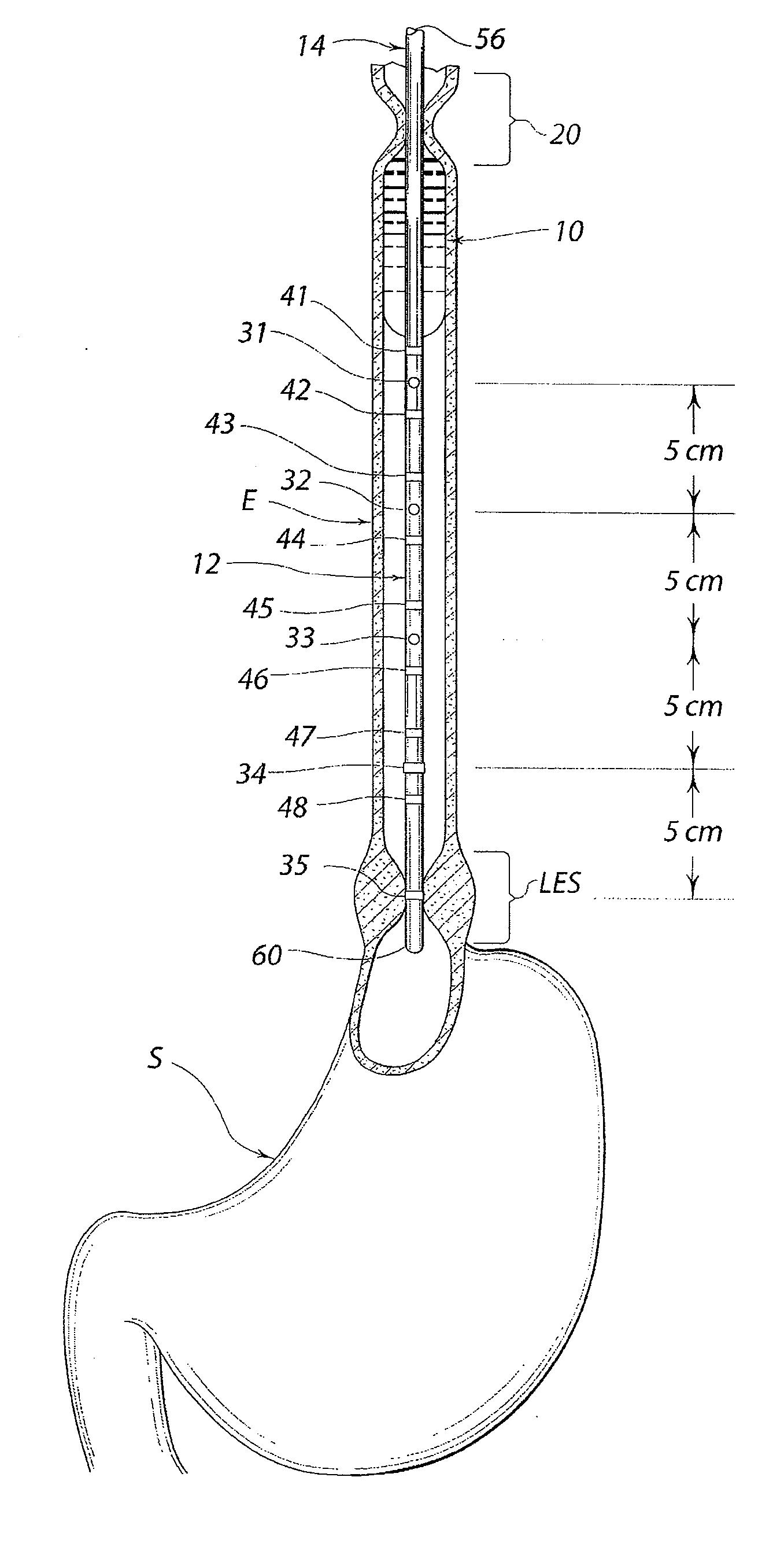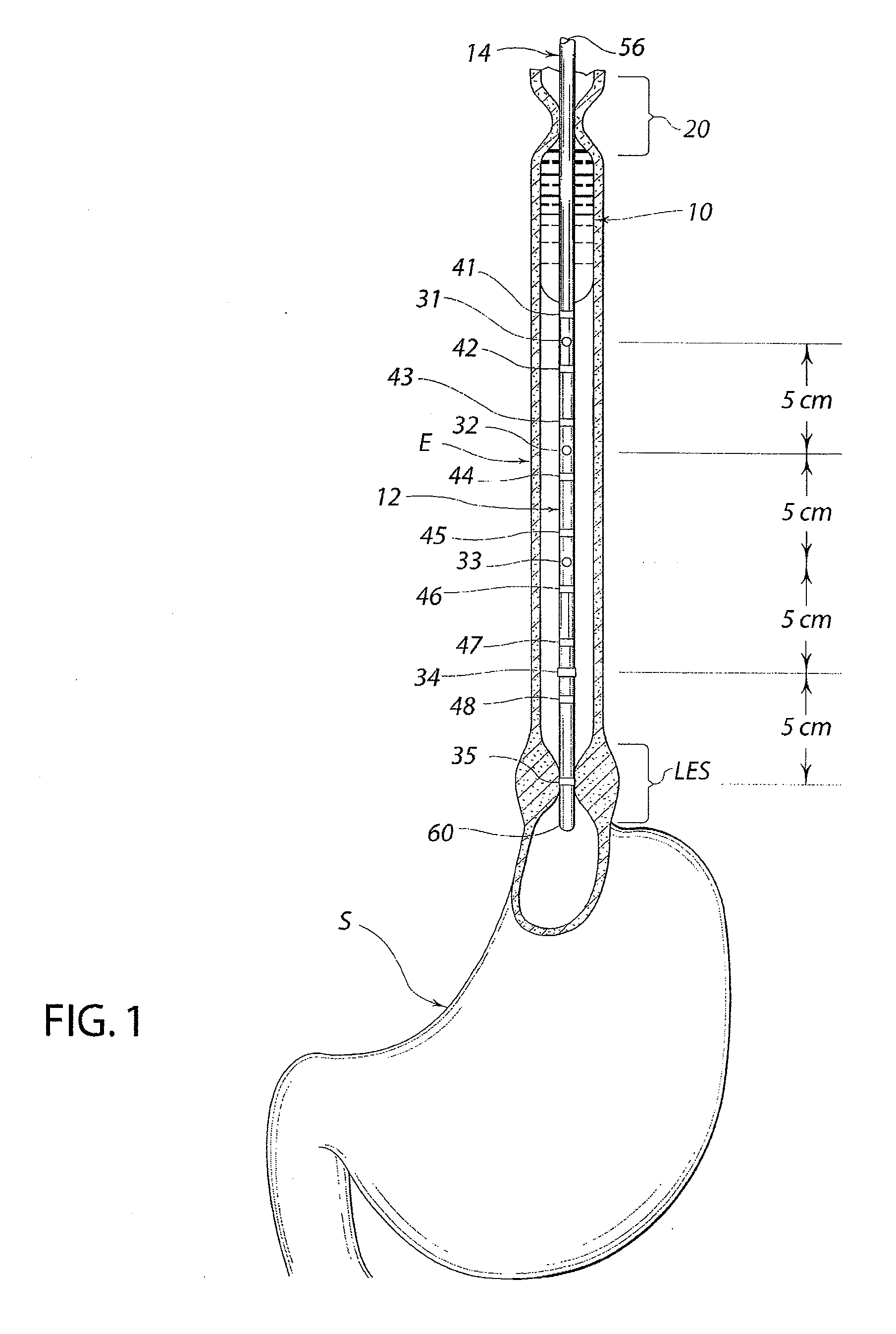Method of esophageal function testing with a standardized thixotropic swallow challenge medium
a thixotropic swallow and esophageal function technology, applied in the field of esophageal function testing with a standardized thixotropic swallow challenge medium, can solve the problems of inability to detect incomplete bolus transit by manometry alone, difficult, if not impossible, to get consistent, accurate, reliable, repeatable impedance measurements, etc., to achieve meaningful results and long shelf life
- Summary
- Abstract
- Description
- Claims
- Application Information
AI Technical Summary
Benefits of technology
Problems solved by technology
Method used
Image
Examples
Embodiment Construction
[0024] A swallow challenge medium 10 of this invention is illustrated diagrammatically in FIG. 1 positioned in a person's esophagus E along with a combination impedance and pressure measuring probe 12 on a catheter 14 for monitoring and / or testing motility function of the esophagus E and bolus transit dynamics through the esophagus E. Upon swallowing the swallow challenge medium 10, it forms a bolus in the person's esophagus E, and a normal esophageal function includes peristaltic muscular contractions 20 of the esophagus wall 16, as illustrated diagrammatically in FIG. 1, to propel the swallow challenge medium (bolus) 10 through the esophagus E to the person's stomach S. As will be explained in more detail below, the swallow challenge medium 10 provides a bolus that has optimal characteristics to enhance assessment of motility functions and malfunctions, including establishments of standards and comparison of individual cases to such standards.
[0025] One or more pressure sensors 3...
PUM
 Login to View More
Login to View More Abstract
Description
Claims
Application Information
 Login to View More
Login to View More - R&D
- Intellectual Property
- Life Sciences
- Materials
- Tech Scout
- Unparalleled Data Quality
- Higher Quality Content
- 60% Fewer Hallucinations
Browse by: Latest US Patents, China's latest patents, Technical Efficacy Thesaurus, Application Domain, Technology Topic, Popular Technical Reports.
© 2025 PatSnap. All rights reserved.Legal|Privacy policy|Modern Slavery Act Transparency Statement|Sitemap|About US| Contact US: help@patsnap.com



